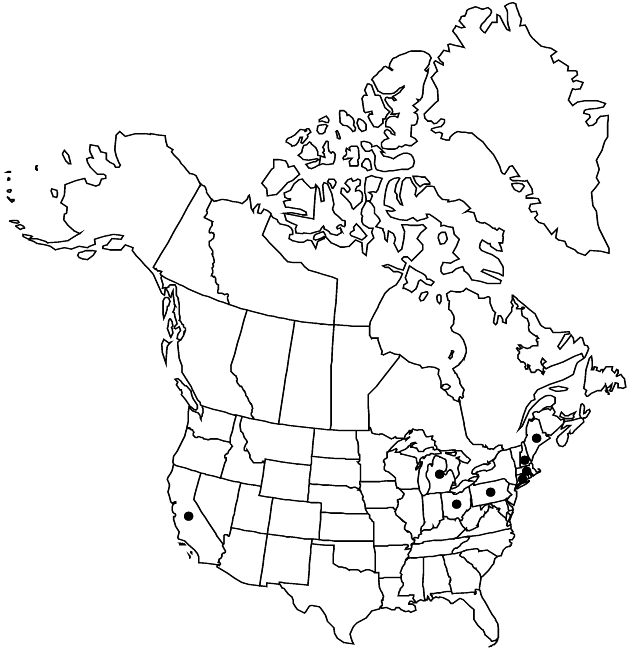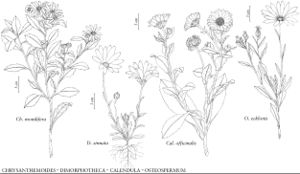Difference between revisions of "Calendula officinalis"
Sp. Pl. 2: 921. 1753.
IntroducedIllustrated
Treatment appears in FNA Volume 19. Treatment on page 382.
FNA>Volume Importer |
imported>Volume Importer |
||
| (6 intermediate revisions by 2 users not shown) | |||
| Line 6: | Line 6: | ||
|place=2: 921. 1753 | |place=2: 921. 1753 | ||
|year=1753 | |year=1753 | ||
| + | }} | ||
| + | |special_status={{Treatment/ID/Special_status | ||
| + | |code=I | ||
| + | |label=Introduced | ||
| + | }}{{Treatment/ID/Special_status | ||
| + | |code=F | ||
| + | |label=Illustrated | ||
}} | }} | ||
|basionyms= | |basionyms= | ||
| Line 23: | Line 30: | ||
|elevation=0–500 m | |elevation=0–500 m | ||
|distribution=Calif.;Conn.;Maine;Mass.;Mich.;N.H.;Ohio;Pa.;Eurasia;Africa;Atlantic Islands. | |distribution=Calif.;Conn.;Maine;Mass.;Mich.;N.H.;Ohio;Pa.;Eurasia;Africa;Atlantic Islands. | ||
| − | |discussion=<p>Cultivars of Calendula officinalis are widely used horticulturally, medicinally, and as pot herbs.</p> | + | |introduced=true |
| + | |discussion=<p>Cultivars of <i>Calendula officinalis</i> are widely used horticulturally, medicinally, and as pot herbs.</p> | ||
|tables= | |tables= | ||
|references= | |references= | ||
| Line 32: | Line 40: | ||
-->{{#Taxon: | -->{{#Taxon: | ||
name=Calendula officinalis | name=Calendula officinalis | ||
| − | |||
|authority=Linnaeus | |authority=Linnaeus | ||
|rank=species | |rank=species | ||
| Line 47: | Line 54: | ||
|publication title=Sp. Pl. | |publication title=Sp. Pl. | ||
|publication year=1753 | |publication year=1753 | ||
| − | |special status= | + | |special status=Introduced;Illustrated |
| − | |source xml=https:// | + | |source xml=https://bitbucket.org/aafc-mbb/fna-data-curation/src/2e0870ddd59836b60bcf96646a41e87ea5a5943a/coarse_grained_fna_xml/V19-20-21/V19_620.xml |
|tribe=Asteraceae tribe Calenduleae | |tribe=Asteraceae tribe Calenduleae | ||
|genus=Calendula | |genus=Calendula | ||
Latest revision as of 19:53, 5 November 2020
Leaf blades 3–12(–18+) cm × 10–30(–60+) mm. Peduncles 5–8(–12+) cm. Phyllaries 12–40+, (8–)10–12+ mm. Ray florets 30–50(–100+); corolla laminae 12–20+ mm. Disc florets (30–)60–150+; corollas (4–)5–6+ mm. Cypselae 9–15(–25+) mm. 2n = 14, 32.
Phenology: Flowering year-round.
Habitat: Disturbed places
Elevation: 0–500 m
Distribution

Introduced; Calif., Conn., Maine, Mass., Mich., N.H., Ohio, Pa., Eurasia, Africa, Atlantic Islands.
Discussion
Cultivars of Calendula officinalis are widely used horticulturally, medicinally, and as pot herbs.
Selected References
None.
Lower Taxa
None.
